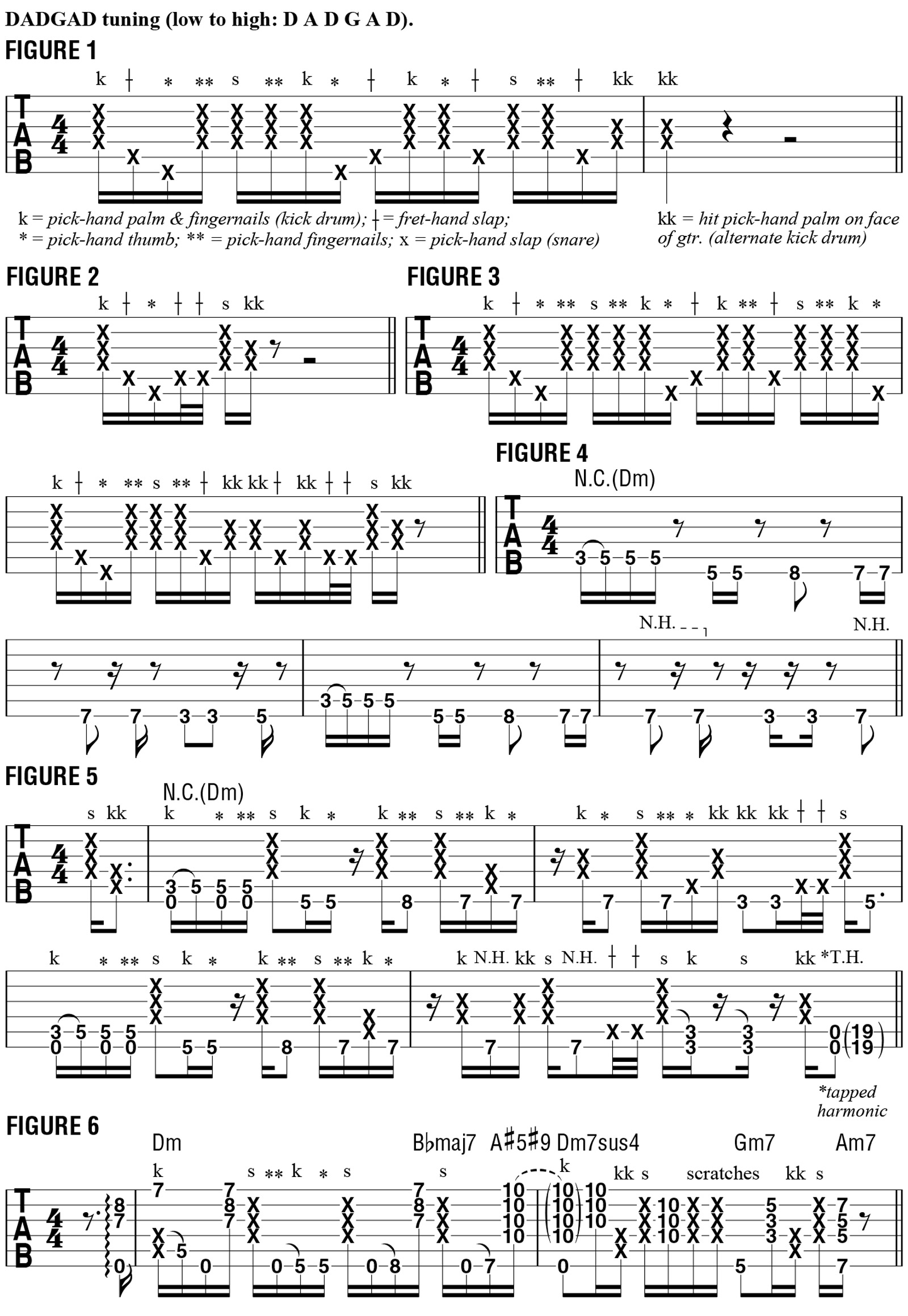Mastering Two-Handed Percussive Techniques
Learn how to emulate the sounds of a kick drum, snare drum and everything in between on an acoustic guitar.
Way back in my August 2016 Wood Vibrations column, I introduced some of the percussive techniques I employ in my composition “Overload,” which I recorded for my latest release, Era. That entire composition is built around percussive patterns I sound with my pick hand, wherein I strike the guitar in a variety of ways to yield different sounds and textures.
This month, I’d like to present the tune’s middle section, which features further variations on the percussive patterns introduced earlier in the piece, and for which I utilize additional ways of striking the instrument with both hands, in order to emulate the sounds of a kick drum, snare drum and everything in between.
Let’s first focus on the manner by which I create these percussive elements before incorporating the bass lines and chordal figures heard in “Overload.” As illustrated in FIGURE 1, I employ six different techniques to create this array of percussive sounds: I begin by hitting the lower strings with my pick-hand fingernails while simultaneously striking the guitar’s body with that hand’s palm; this represents a kick drum sound. This is followed by a fret-hand slap on the fretboard, after which the pick-hand thumb strikes the muted sixth string. On the last 16th note of beat one, the pick-hand fingernails hit muted strings. Beat two begins with a pick-hand slap onto all six strings, representing a snare sound, after which I alternate between the previous techniques. At the end of the figure, I hit the guitar’s body with my pick-hand palm to create an alternate kick drum sound.

FIGURE 2 represents the percussive techniques used in bar 2 across beats three and four of the middle section: I begin in a similar manner to FIGURE 1, but on the last 16th note of beat one I sound two consecutive 32nd-note fret-hand taps onto the board, followed by snare and kick accents. FIGURE 3 combines these two bars, and notice how the percussive techniques in the complete bar 2 should be executed.
Before we move on to the bass line, keep in mind that the guitar is in DADGAD tuning. As shown in FIGURE 4, bars 1–3 are very straightforward, played in a syncopated rhythm of 16th-note accents. In bar 4, natural harmonics (N.H.) take the place of conventionally sounded notes.
The next step is to combine this bass line with the previously detailed percussive attacks, as illustrated in FIGURE 5. Following the pickup bar, the initial kick-drum attack sounds the sixth and fifth strings together. After the hammer-on, I strike these strings with the thumb and then the fingernails. A snare hit falls squarely on beat two, and the remaining bass notes in the bar are sounded with one of the four percussive attacks. Notice the manner by which the natural harmonics are performed in bar 4, which culminates with tapped harmonics on the open bottom two strings at the 19th fret.
The final element to include is the chords, as shown in FIGURE 6. Utilizing essentially the same sequence of percussive attacks, Dm, Bbmaj7, A7#5#9, Dm7sus4, Gm7 and Am7 are incorporated.
This is my final Wood Vibrations column for now. I hope you have enjoyed this latest run and discovered some new, inspiring approaches to playing the acoustic guitar. See you on the road!
Get The Pick Newsletter
All the latest guitar news, interviews, lessons, reviews, deals and more, direct to your inbox!







![Joe Bonamassa [left] wears a deep blue suit and polka-dotted shirt and plays his green refin Strat; the late Irish blues legend Rory Gallagher [right] screams and inflicts some punishment on his heavily worn number one Stratocaster.](https://cdn.mos.cms.futurecdn.net/cw28h7UBcTVfTLs7p7eiLe.jpg)


